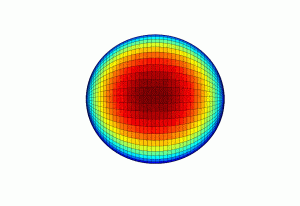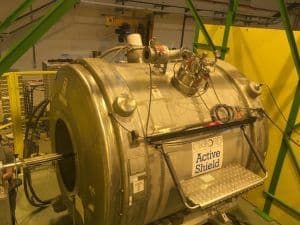Profile
Liam Gaffney
So long and thanks for all the fish
-
About Me:
I’m a physicist working at the University of Liverpool and previously lived and worked in Belgium, Scotland and Switzerland. When I’m not studying radioactive isotopes I like to go cycling or play 5-a-side football.
-
Read more
Football and cycling are good ways to keep fit, but I also like being lazy and hanging out with friends. I enjoy cooking, especially making my own pizzas because you can put whatever toppings on you want (lots and lots of cheese) and make the base nice and thick. 🍕
I like to listen to music, especially when working because it helps me to concentrate. My favourite band is Radiohead, but I will listen to anything if it’s good and always open for recommendations. 🎵
Even though I work at the University of Liverpool, I support Manchester United, which doesn’t make me the most popular person in the department. I love watching rugby league and Widnes Vikings are my team, but they’re not very good at the moment (just like Manchester United)…
I’ve just bought an old house with my girlfriend and we’re spending lots of time (and money) renovating it, so my weekends are filled with building walls and choosing paint colours at the moment. If you’ve got a favourite colour for the bathroom, let me know! 🏠
-
My pronouns are:
he/him
-
I'm a member of team ISOLDE
-
My Work:
I study radioactive or unstable isotopes at CERN. I want to measure the different shapes of the nucleus at the centre of atom, which helps us understand how protons and neutrons bind together. These nuclei aren’t usually spherical like a football, but can have exotic shapes like rugby balls and pears!
-
Read more
I work at a facility called ISOLDE, which produces radioactive ion beams using the protons accelerated to high energies at CERN. You might know CERN from the Large Hadron Collider (LHC), but instead of smashing protons in to each other, we slam them in to a stack of uranium foils. When the high-energy proton beam hits the uranium atoms in the foils it causes nuclear reactions, which produces a whole range of radioactive isotopes.
I want to look for isotopes where the nucleus is shaped like a pear. To do this, we have to separate out all the other rubbish that is produced and select atoms of a single isotopes of a single element. This is like finding a needle in a haystack, but we have lots of tricks up our sleeves, like using finely-tuned lasers, powerful magnets and high-power accelerators.
We recently found that radium-224, which has a half-life of only 3.6 days is one of these rare pear-shaped isotopes, only the second one to be confirmed! At the same time, we noticed that radon-220 behaved a bit like a wobbly pear and it was vibrating between a rugby-ball shape to a pear shape.

A cartoon of what the nucleus of radon-220 looks like.
Our new project is using an old Magnetic Resonance Imaging (MRI) machine from a hospital to do nuclear reactions. Did you know that MRI machines use the principle of Nuclear Magnetic Resonance (NMR) to image inside of the body and to diagnose everything from broken bones to tumours? Well it’s basically just a really big, powerful magnet, which turns out to be really useful for bending particles. We’re now using it like a camera to study nuclear reactions like those that created the elements we see today in big astronomical events like exploding stars.

A recycled MRI magnet from Australia, without all the shiny plastic parts. Now it’s used for looking at nuclear reactions at CERN.
-
Education:
St Basil’s Primary School, Widnes (1992-1998);
Sts. Peter and Paul Catholic High School, Widnes (1998-2005);
University of Liverpool, BSc (2005-2008);
University of Liverpool, PhD (2008-2012) -
Qualifications:
11 GCSEs (1A*, 5As and 5Bs);
A-Levels (A in Physics, C in Maths and C in Chemistry);
BSc (Hons) in Physics – First Class;
PhD in Nuclear Physics -
Work History:
Stockroom assistant – Argos, Widnes (2003-2007);
Chief potato peeler – Local Chip Shop, Widnes (2003-2008);
Post-doctoral Research Assistant – KU Leuven, Belgium (2013-2015);
Post-doctoral Research Assistant – University of the West of Scotland (2015-2016);
Senior Research Fellow – CERN (2016-2019) -
Job title:
Ernest Rutherford Research Fellow
-
Employer:
University of Liverpool
-
My Interview
-
How would you describe yourself in 3 words?
Rubbish with descriptions
What did you want to be after you left school?
A doctor, but I don't like blood :(
Were you ever in trouble at school?
Yes, but not too badly
If you weren't doing this job, what would you choose instead?
Train driver
Who is your favourite singer or band?
Arcade Fire
What's your favourite food?
Gravy
If you had 3 wishes for yourself what would they be? - be honest!
To be happy, successful in science and for Manchester United to win the Champions League
Tell us a joke.
What's a nuclear physicists favourite food? Fission chips!
-

